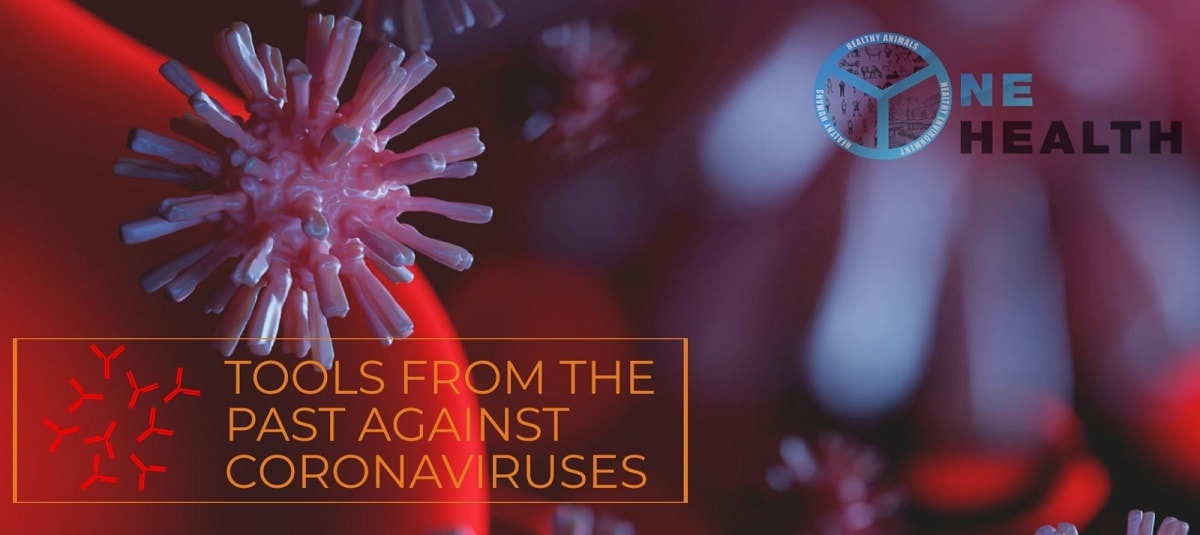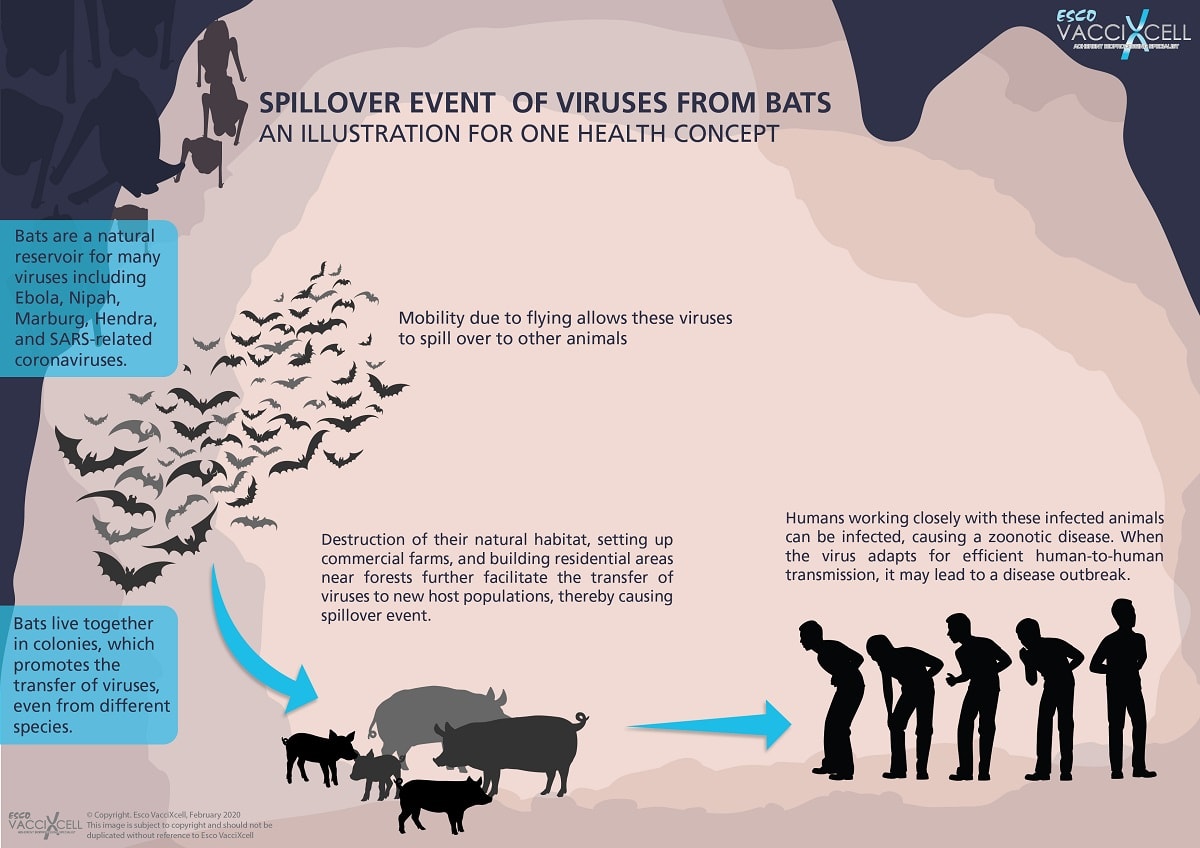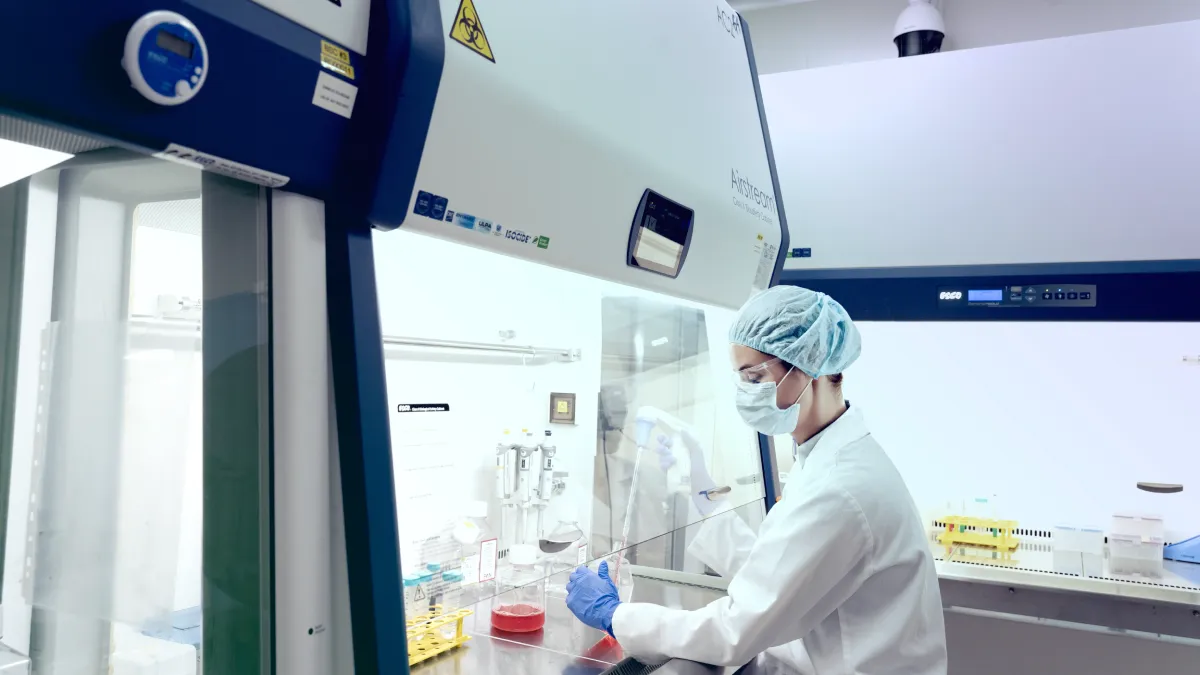
Officially named by the World Health Organization as COVID-19, the recent coronavirus disease outbreak that started in Wuhan, China remains a global health concern. The causative pathogen, SARS-CoV-2, is recognized as a sister to severe acute respiratory syndrome coronaviruses (SARS-CoVs) and belongs to the species Severe acute respiratory syndrome-related coronavirus. In just two decades, three spillover events, including the ongoing outbreak, have occurred of animal coronaviruses to humans. The relatedness of SARS-CoV-2 to MERS-CoV (2012) and SARS-CoV (2019) greatly helps in the development of diagnostics and therapeutics - with considerable groundwork laid in terms of pathogenicity and epidemiology.
Bats as Potential Origin
The first paper reporting the identification of the SARS-CoV-2 virus, earlier referred to as the novel coronavirus (2019-nCoV), was published by Wuhan Institute of Virology scientists. Full length genome sequences were also published, allowing rapid development of interventions. At the whole genome level, SARS-CoV-2 shares 96% similarity to RaTG13, a bat coronavirus. This strengthens the hypothesis that the COVID-19 - disease causing virus originated from bats and caused a spillover event to intermediate hosts, which may include civets and pigs, much like how SARS-CoV potentially originated in bats.

Animal-to-Human then Human-to-Human
Although disease transmission is still being heavily investigated, clinical and epidemiological data suggest human-to-human transmission. The first few cases of the COVID-19 disease include those that have contact with live animal markets, yet, human-to-human transmission have been suggested due to cases without prior exposure. Nosocomial infections have also been reported associated with health workers. WHO recommends the follow-up of those who have been in contact with infected patients to 14 days, the set maximum incubation period (median estimates 5-6 days).
Tools as Part of One Health Approach
Diagnostic tests and vaccines are vital to prevent further spread of COVID-19. Quick diagnosis would mean faster administration of alleviating interventions to prevent hospitalization, which Wuhan was reported to having problems with. Development of vaccines not just for humans but also for animals to break the chain of transmission is also of importance.
Although research have shown that the virus can bind to angiotensin-converting enzyme (ACE-2) from bats, humans, civets, and pigs the intermediate host for the SARS-CoV-2 virus has not yet been identified or index patient may have been directly infected from the original source, possibly bats. Further research is needed to elucidate the nature of the population of coronaviruses in the wild as well as their mechanisms in jumping species-to-species, i.e., how they gain mutations to cause zoonotic diseases. Understanding conserved genome regions as wells as surface proteins amongst these coronaviruses existing in the wild may help in the development of vaccines that may be targeted towards intermediate hosts. Similar approach to how rabies vaccines are developed for dogs and foxes, broad-range vaccines against coronaviruses may also be developed for pigs.
Towards Diagnostic/Vaccine Self-Sufficiency for Outbreaks
Dealing with outbreaks require faster reponse to prevent epidemics and pandemics. R&D and manufacturing processes should include technologies for easier production, higher yield, and better control. Scale-up issues from R&D, pilot, to manufacturing should be reduced with scalable (scale-up) equipment and processes.
Esco VacciXcell offers bioreactors of different scales to provide a culture environment for the production of diagnostics and vaccines against emerging disease threats. Recombinant protein antigen production can be achieved through our stirred tank bioreactors, StirCradle™ and StirCradle™PRO for suspension cell lines. Expression systems such as mammalian adherent cell lines can also be efficiently grown in the linearly scalable Tide Motion bioreactors, from CelXrocker™ to TideXcell™. These aforementioned bioreactors can also be used to grow cells that secrete mAbs that can be purified and be used for serological confirmation of SARS-CoV-2 infection.
As a response against border-crossing emerging pathogens, strategies should also include transboundary technologies to control future outbreaks. Tide Motion bioreactors crosses boundaries of adherent cell culture enabling research and development of tools against emerging diseases.
References:
Gorbalenya, A. et al. Severe acute respiratory syndrome-related coronavirus - The species and its viruses, a statement of the Coronavirus Study Group. bioRxiv https://doi.org/10.1101/2020.02.07.937862 (2020).
World Health Organization (2020). Coronavirus. Last accessed 12 February 2020 from https://www.who.int/health-topics/coronavirus.
Zhou, P. et al. A pneumonia outbreak associated with a new coronavirus of probable bat origin. Nature https:// doi.org/10.1038/s41586-020-2012-7 (2020).
Sign up to our newsletter and receive the latest news and updates about our products!
